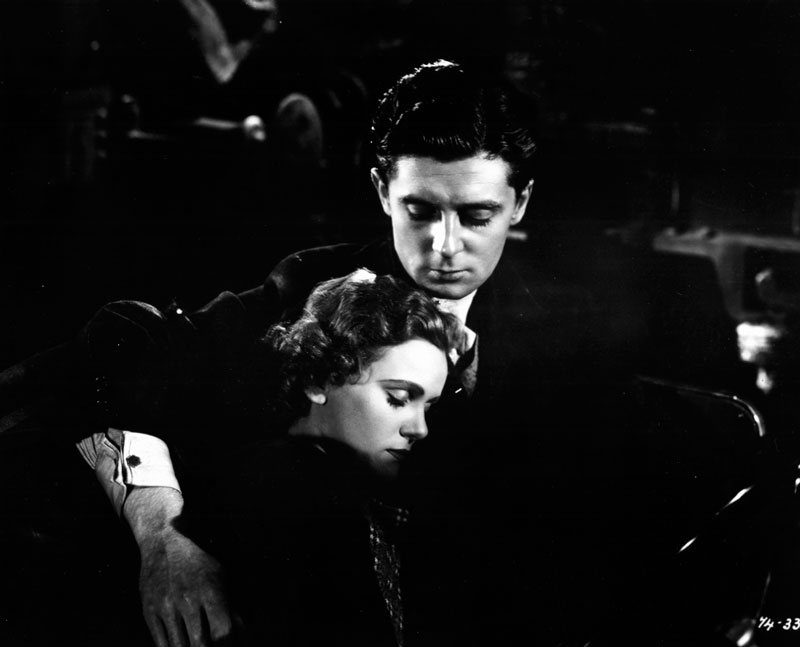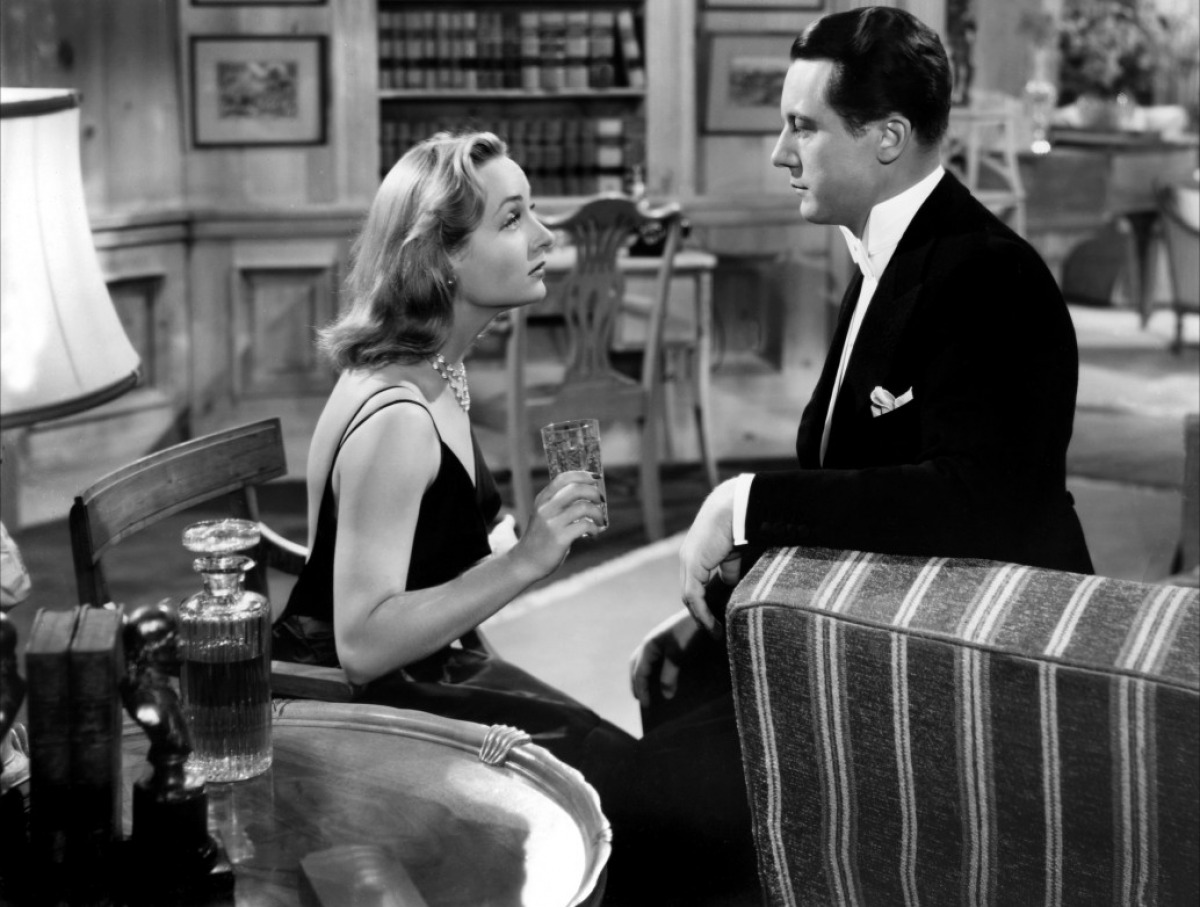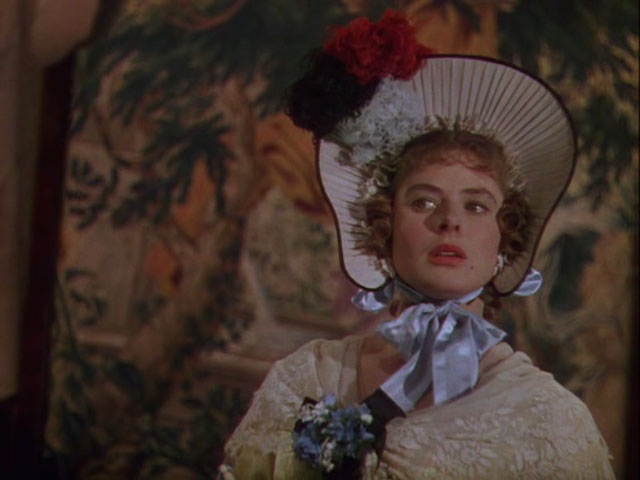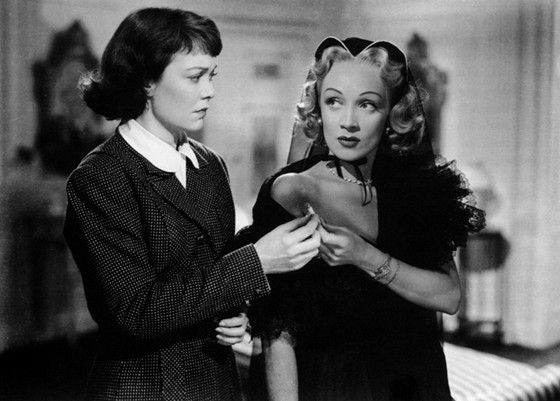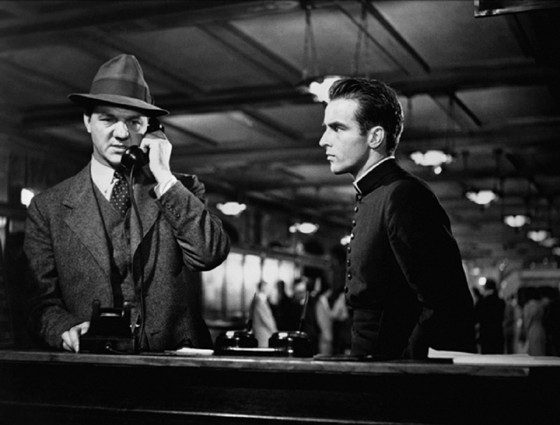6. Young and Innocent (1937)
The next film Hitchcock made was Young and Innocent, another chase film featuring a wrongly accused man, Robert Tisdall, played by Derrick de Marney. Here he is helped by Nova Pilbeam as Erica, his love interest, who played the kidnapped child in 1934 in The Man Who Knew Too Much.
Although highly reminiscent of The 39 Steps, Young and Innocent features one of Hitchcock’s greatest and best known shots. Erica is trying to clear Robert’s name and find the real murderer, and has located an old tramp who has seen the killer and who can identify him, but only by his nervous eye twitch. She tracks the killer to a fancy ballroom, and Hitchcock’s camera sweeps across the room in a magnificent dolly shoot, moving from person to person and finally craning in to a tight close up on the eye of the drummer in a blackface jazz band. As the shot tightens to an enormous close up, the man’s eye begins to twitch, as if the camera itself has ferreted out the killer.
Hitchcock returned to this technique later in his career, particularly in the party scene in Notorious where a tremendously high craning camera shot comes down to reveal a key being held in Ingrid Bergman’s hand in a tight close up. A modest success at the time, Young and Innocent is certainly worth seeing as an example of the director’s developing skills.
7. Mr. and Mrs. Smith (1941)
Hitchcock told Truffaut and others that he had made his only screwball comedy as a favor to Carole Lombard, but it is likely that RKO insisted on including the film as part of a two picture deal (the second was Suspicion) and Hitchcock relented to this demand.
The material actually suited him quite well. A frequently bickering but happy married couple, David and Ann Smith (Robert Montgomery and Carole Lombard) find that due to a technicality they are actually not legally married, and when David doesn’t immediately ask Ann to “marry” him, she leaves him in a huff and is eventually romanced by David’s law partner, Jeff Custer (Gene Raymond).
The Smiths finally end up back together, of course, as in most ‘comedy of remarriage’ films, but Hitchcock showed a deft hand at handling the comic material, without getting too hammy or cornball. Shot quickly – in only eight weeks – Mr. and Mrs. Smith is not a major work by any means but is an interesting example of what Hitchcock could do working totally outside of the suspense genre.
8. Under Capricorn (1949)
An infrequently seen film that was one of two films that Hitchcock produced under the banner of his own company, Transatlantic Pictures, Under Capricorn was a flop when it was released in 1949.
Still utilizing the long takes that he had first experimented with the year before in Rope, Under Capricorn is set in 1840’s Australia, where Charles Adare (Michael Wilding), a cousin of the new Governor, arrives in Australia to make his fortune. He encounters Sam Flusky (Joseph Cotton), a successful businessman who seeks to assist Adare in his ventures and who is married to Lady Henrietta (Ingrid Bergman), whom Adare recalls from his youth in Ireland. But Lady Henrietta is an unrepentant alcoholic who is living in her home as a virtual prisoner to her handmaid Milly, who is plotting to ruin the Flusky’s marriage in the hope of marrying Sam herself.
The film is mostly melodrama with little suspense, and watching it one feels that Hitchcock was not totally comfortable making costume period pieces. But despite the film’s flaws there is much about the film to like, including a brilliant performance by Ingrid Bergman as Lady Henrietta, a woman torn between her loyalty to her husband and her melancholy for her lost homeland. The film was such a flop it was literally repossessed by the bank that financed it, and Hitchcock lost control of the film, but it was eventually released in 2004 on DVD, so the film remains available to view. Watch for the shrunken head!
9. Stage Fright (1950)
While still in England after completing Under Capricorn, Hitchcock made his first film for Warner’s, Stage Fright. Adapted by Whitfield Cook from two stories by Selwyn Jepson, Stage Fright features Jane Wyman as Eve Gill, a young actress at the Royal Academy of Dramatic Arts in London (Hitchcock’s daughter, Pat, was a student there at the time and is featured in a small role in the film). Eve is smitten by Jonathan Cooper (Richard Todd) who is under the spell of actress Charlotte Inwood (Marlene Dietrich) and who may have killed her husband for her; the story that he tells Eve as the film opens in flashback turns out to be a lie, and this cinematic untruth was what Hitchcock blamed for the film’s failure with audiences on its release in 1950.
But Stage Fright has many fine moments in it, including a number of funny and touching scenes between Eve and her father, played by the excellent character actor Alastair Sim, and these scenes must have had a resonance for Hitchcock as he thought about his own daughter and her thespian ambitions. Finally, Eve’s heart is won over by the charming police inspector Wilfred ‘Ordinary’ Smith (Michael Wilding) and the story ends happily, but not after a suspenseful finale in the theater, of course.
The film also features a great scene at a rainy garden party, when a boy with a bloody doll goes onstage to try to shake up the usual unflappable Charlotte. It also features Dietrich singing the torch song “The Laziest Gal in Town”, which was probably what Mel Brooks had in mind during Madeline Kahn’s merciless parody “I’m Tired” in Blazing Saddles. With moments of humor, melodrama and light comedy mixed with grim moments of suspense, Stage Fright deserved a better fate than it received in 1950, but you can see it and enjoy it now courtesy of the magic of DVD.
10. I Confess (1952)
While several of these films evidence Hitchcock’s penchant for humor, I Confess is almost totally humorless. The film is the story of a priest, Father Logan (Montgomery Clift) who hears church handyman Otto Keller (O.E. Hasse) confess to murder while in the confessional, and who becomes suspected himself of the murder when it is revealed that he and former girlfriend Ruth Grandfort (Anne Baxter) were being blackmailed by the dead man.
I Confess was highly regarded by Hitchcock’s early admirers in the Cahiers du Cinema group, who appreciated the film for its religious imagery and the sense that Father Logan is being crucified for sticking to his Catholic beliefs in the sanctity of the confessional. I Confess was shot in Quebec in black and white and the city’s beautiful architecture dominates the sometimes heavy story, and Hitchcock added stark, high contrast lighting and long shadows to the nighttime scenes that give the film a definite noir quality.
Hitchcock did not like working with method actors like Montgomery Clift – preferring instead to work with the likes of Jimmy Stewart and Cary Grant, who did not agonize over internalizing their roles emotionally – but Clift’s performance as Father Logan ends up being one of the film’s high points, and Karl Malden is good as usual as the plodding police detective who suspects Logan of the murder but eventually realizes the truth. Well known European actress Dolly Haas, wife of New York Times cartoonist Al Hirschfeld (a personal friend of Hitchcock’s) plays Keller’s anguished wife, Alma.
A fine film all around, I Confess has been long overlooked, probably because it was overshadowed by the great films that Hitchcock made just after it was released. See it if you can!
Author Bio: Jim Davidson is a 1980 graduate of Northwestern University’s Radio-TV-Film Dept. He lives in the San Francisco Bay Area and has been a video producer since 1987. Jim has written articles for Images Film journal and is currently working on a book about the movie Harold and Maude.
